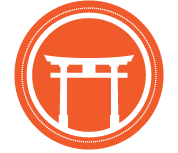From the Editor
We’d like to start this month’s issue of In the Dojo by congratulating senior dojo member Greg Schneiderman (aka Greg Squared) on his promotion to sandan (third-degree black belt). Greg began training in 2007 and has cultivated and maintained a dedication to the art and our dojo that has withstood dojo changes and moves, graduate school, becoming a parent, career changes, and of course the pandemic. Amidst these many life changes and challenges, and preparing for his demonstration, Greg also launched his own woodworking and cabinetry company called Great Circles Woodworking. AOSB is fortunate to have such a student, and we are very pleased to share the essay he wrote as part of his sandan application.
Martial Arts Philosophy: An Aikido Approach to Life
In the Dojo Volume 3 Issue 9
By Greg Squared
Perhaps the most fundamental task the art of aikido sets for its practitioners is learning how to apply the art’s core ideas of entering (irimi) and turning (tenkan) to interactions with negative energy in the ‘real world’. I’m not referring to situations where there is a need for physical self-defense. In the modern world how often do we really need that ability? I honestly can’t remember the last time I felt physically threatened on the street. I mean, rather, those occasions where disagreements occur between people. As an aikidoka, I can choose to contend with negative energy, get out of its way and let it go by me or, if I care enough, try to redirect it in a positive direction.
For me, the past two years have been a time of continual change, unpredictability, and shifting circumstances. Much of it has been good, a lot of it has been stressful, most of it has been challenging, and all of it has been heightened by the pandemic. Starting a new business, ending an old career, and navigating family interactions and new friendships have all presented opportunities to apply what I know of the art in practical and useful ways.
Like so many other aikidoka, though, I am an imperfect student, sometimes falling short of what the art challenges me to do. I would like to be able to say that a philosophy that includes aikido has helped me anticipate every negative interaction with a crummy client and that it came out well as a result. Or that I can always find ways to redirect stress toward a positive outcome. But I’m subject to the same physical and emotional limits as anybody else and sometimes, particularly when I’m sleep-deprived, they lead me into contentious relationships with those around me.
When I think about aikido and my approach to life I think about the moment before training when I’m tying my obi. This moment is a pivot. It represents a break, a chance to turn away from the ordinary work-a-day world of jobs and clients and family and money and all the stresses of daily living. It’s a turn toward an ideal frame of existence wherein I am able to clear my mind of extraneous thoughts and issues and focus solely on one problem at a time. It’s an opportunity to hone what I already know about not engaging with bad energy and to dedicate myself once again to a particular way of being in the world. Though a knot would typically represent a binding or joining together of separate things, in this case tying the knot in my belt represents a separation of the stresses of my life from my training in the dojo. Untying the knot at the end of practice can then be seen as a moment of unifying in my mind the spirit of my training with the current conditions of my life at large, and to once again bind more closely together my training and my life outside the dojo.


